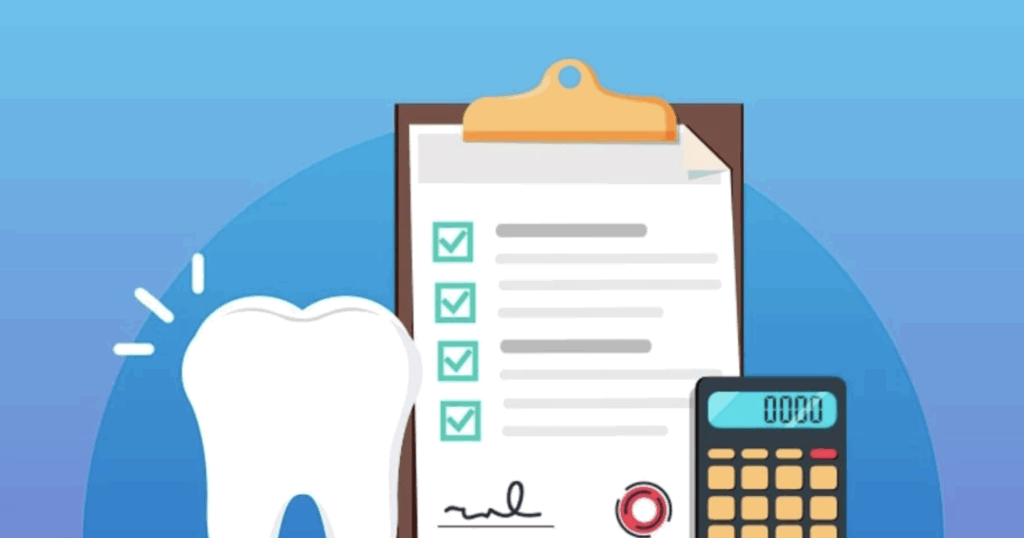


The LP’s Guide to Tax-Free Gains from Qualified Small Business Stock under Section 1202
In the course of Companyon’s fundraising discussions with high net worth individuals, angel investors, VCs, and family offices, we’ve been quite surprised at how many sophisticated investors are either unaware of the tax advantages provided by Section 1202 or confused about the specific rules regarding how Section 1202 works for investors in venture capital funds. Many are surprised to learn that distributions from early-stage VC funds can also qualify for these tax benefits. Still, it depends on how the fund made its investments and whether or not the investment details are shared with its limited partners.
To learn more about this topic, we sat down with Scott Pinarchick, a tax partner at Ropes & Gray in Boston who specializes in private equity, venture capital and mergers & acquisitions. Scott has been practicing tax law for more than 25 years in Boston. Ropes & Gray is a preeminent global law firm with approximately 1,500 lawyers serving clients in major centers of business, finance, technology and government.
Note that this article is a high-level summary of only some of the provisions in Section 1202. Always consult your tax advisor about your specific situation before making any investments and related tax planning assumptions.
Background
Angel investors and fund managers often tout the tax advantages of early-stage investing through Section 1202 of the Internal Revenue Code (Small Business Qualified Stock), enacted in 1993 to incentivize small business growth. As explained here, if an investment qualifies for Section 1202 treatment and such investment is sold, its investors can avoid up to 100% of the capital gains tax on the greater of $10M or 10x their cost basis. In the case of a venture capital fund investor (known as a Limited Partner or LP), the exclusion operates on a per-LP and per-company profit distribution basis.
While not a comprehensive list, the most-relevant Section 1202 qualifying criteria for most early stage-tech investments are:
- The stock was issued by a domestic C corporation. An investment made in an LLC treated as partnership for federal income tax purposes or an S corporation does not qualify.
- On the date of the stock issue, at all times before and immediately after the new investment, the aggregate gross assets of the issuing corporation did not exceed $50 million. Investors should be mindful of the company’s post-money valuation.
- The issuing corporation does not repurchase 5% of more of its own stock (determined by the value of the stock at the beginning of the two-year period) during the two-year period beginning one year before the issue date (certain exceptions apply).
- The issuing corporation does not purchase any of the stock from the investor or a related person during a four-year period beginning two years before the issue date (certain exceptions apply).
- The stock is held for at least five years.
- The corporation uses its assets in an active qualified business.
Investments in Venture Funds and circumstances around the start of the 5-year holding period seem to cause the most confusion, especially when investments are made as convertible notes or SAFEs. To further understand these topics, I asked Scott some questions I had about Section 1202 of the Internal Revenue Code.
Venture Fund Investments
Q: Many investors assume Section 1202 tax benefits are only available to angels who directly invest in startups. Do the benefits extend to limited partners (LPs) in a venture fund?
Most venture funds are structured as limited partnerships which are pass-through entities. Fund LPs who are US-taxable individuals or eligible trusts should receive the benefit of Section 1202 directly when their venture fund makes an exit from a QSBS investment so long as they are LPs when the fund makes and exits the investment (at least five years later).
Q: Given that many early-stage funds accept investments in multiple closings over a 1-2 year fund formation period, does it matter when an LP invests in a fund to benefit from Section 1202 tax treatment on distributions?
An exit by a fund of a QSBS investment will only have Section 1202 tax treatment for LPs who were investors in the fund at the time the qualifying investment was made. LPs who invest in the fund after the fund’s qualifying investment will pay full capital gains from that particular exit.

Q: In my conversations with potential LPs, many have asked me whether several individuals can pool their capital into an LLC to make a fund investment. Does Section 1202 tax treatment extend to pass-through entities that invest in a fund?
Individuals who pool capital into a US S corporation, LLC or trust, partnership, or common trust fund that becomes a partner in the fund should still receive the benefit from Section 1202 as long as it is a flow-through entity under Section 1202 and the gain flows up to a US taxable individual.
Q: A common strategy for VC fund managers is making one or more company investments before their fund’s first close. General partners either make direct investments using personal funds or create a Special Purpose Vehicle (SPV). Once the VC fund has its first close, these early investments are then transferred into the new fund. Investors call this process “deal warehousing.” Does deal warehousing impact the benefit of Section 1202 for all Limited Partners?
Transferring an investment or contributing shares to a partnership generally nullifies Section 1202 treatment with respect to the shares for all parties involved. If fund managers are trying to maximize the tax benefits of Section 1202 for their LPs, they should avoid warehousing and invest directly from a closed or fertile fund. Pooling the initial investors’ funds into a first “soft” close of the VC fund and making the investment from the fund is a much better way to benefit from Section 1202. As mentioned above, only investors who are in the fund at the time the investment is made can benefit from Section 1202 with respect to that investment.
Convertible Notes
While many investors buy equity in an early-stage company, others use different instruments, such as convertible notes, that can eventually transfer into equity. While some convertible notes convert at a near-term round of financing, others can take years if the startup delays the funding round or exits before the conversion.
Q: Does the signing date of the convertible note start the 5-year holding period to qualify for Section 1202 treatment?
No, the issuance of a convertible note is not the start of the holding period for Section 1202 purposes because a convertible debt instrument is not considered equity. Investors must convert the note into equity to start the five-year holding period (assuming the company stock meets the Section 1202 requirements at the time of the conversion).
Suppose investors suspect that a convertible note’s lifetime could be a year or longer. In that case, they might consider negotiating a priced round with the entrepreneur instead of using a debt instrument, given the potential high opportunity cost of negating tax benefits.
SAFEs
Some startups execute SAFEs (Simple Agreement for Future Equity) as a substitute for an equity round. Other startups use SAFEs as a bridge mechanism while they fundraise or complete a diligence process with a prospective investor.
Q: Does the 5-year holding period for Section 1202 treatment start when a SAFE investment is executed or when it converts into equity?
Whether a SAFE investment qualifies for Section 1202 treatment is unclear and depends on the terms of the SAFE. While a SAFE is generally not considered debt, it can be perceived differently by the tax authorities depending on its terms.
On the one hand, a SAFE can be interpreted as a prepaid forward contract for investors to attain new stock when it’s issued. In this case, a SAFE is not considered equity, and an investor is not treated as an owner until this new stock is issued. Depending on its terms, a SAFE may be interpreted as current equity even though it technically becomes a different class of equity in the future. If the SAFE were to qualify as equity pursuant to its terms, the five-year holding period begins at the issue of the SAFE. In my experience, the terms of most SAFEs would not qualify as equity for federal income tax purposes, including Section 1202.
Given this gray area around Section 1202 treatment for SAFEs, investors should tread carefully and seek the advice of their tax advisors when classifying SAFE investments.
Mergers, Acquisitions, and Recapitalizations
Q: Do cashless transactions such as tax-free mergers, acquisitions, and other recapitalizations eliminate the benefits of Section 1202?
In general, a recapitalization should not affect Section 1202 status. Other tax-free exchanges like stock for stock exchanges or merger in an acquisition generally don’t eliminate the benefit of Section 1202, but they can limit the benefit since they’re usually treated as an exchange of stock. As a result of such exchange, the investors are need to test whether their new stock is treated as qualified small business stock under Section 1202. If the new stock qualifies as Section1202 stock, the benefits continue on future appreciation. If the new stock does not qualify, the Section1202 benefits become limited to the stock value on the date of the exchange. Any value increases after this date are then subject to regular tax.
Venture Fund Evaluation & Reporting
When considering an investment in a Venture Capital Fund, LPs should consider what impact Section 1202 may have on their post-tax return on investment. Because different types of LPs (individuals, pensions, endowments, etc.) are taxed differently on gains from VC fund distributions, fund performance metrics are usually reported on a pre-tax basis.
Q: What questions should a Limited Partner who generally qualifies for QSBS tax treatment ask the managers of an early-stage venture fund when considering a fund investment?
LPs should ask fund managers the following questions related to how that fund invests in companies and reports to its limited partners:
- Will the fund purchase any warehoused deals? If so, what % of the invested capital will be warehoused investments vs. direct investments? Depending on how warehoused investments are structured, they may not qualify for benefits under Section 1202.
- Does the fund typically invest its first check in a company as priced equity, convertible notes, or SAFES? Investments in convertible notes and SAFEs will delay the start of the 5-year holding period for Section 1202 benefits.
- What percentage of investments from the fund will be in non-US companies? Non-US investments will not qualify for Section 1202 benefits.
- If the fund is multi-stage, what percentage of investments will be in US C corporations with less than $50M in gross assets? These investments are most likely to entitle an individual investor to Section 1202 benefits.
- When distributing cash to Limited Partners from portfolio company exits, does the fund manager and its tax firm provide a Section 1202 assessment as part of the distribution notice and K-1 tax statements? Otherwise, it would be difficult for an investor to know whether any gains from one of the fund’s investments qualified for Section 1202 benefits.
About Ropes & Gray
Ropes & Gray was named both “2022 Law Firm of the Year” and the number one firm on the A-List by The American Lawyer (in both the U.S. and U.K.). A preeminent global law firm, Ropes & Gray has approximately 1,500 lawyers and legal professionals serving clients in major centers of business, finance, technology, and government. The firm has offices in Boston, Chicago, Dublin, Hong Kong, London, Los Angeles, New York, San Francisco, Seoul, Shanghai, Silicon Valley, Tokyo and Washington, D.C. The firm has consistently been recognized for its leading practices in many areas, including private equity, M&A, finance, asset management, real estate, tax, antitrust, life sciences, health care, intellectual property, litigation & enforcement, privacy & cybersecurity, and business restructuring.
Our Resources
Get access to free tools to help accelerate your company’s growth, regardless of a future partnership with Companyon—because, we’re here to help.
Our Newsletter
Join our newsletter for helpful guides, expert insights and company updates delivered monthly to your inbox.



 Blog
Blog



